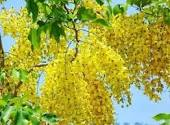In
the past Payyanur had a very beautiful landscape. The great
perumpuzha winding along the eastern side separating kunhimangalam
from payyanur took a sharp turn at changoorichal and merged with the
kavvayi lagoon in the west. The water sheds near the river were picturesque with multicolored water lilies. These riverbeds were the
breeding ground of all marine life. Fish, prawn, mussel, crab etc.
Innumerable cranes and other birds - native and migratory perched in trees. The emerald paddy fields started from here.
The raised platforms called kuthiru, where small thatched houses
were built were like islands in the emerald fields. There were very
few huge constructions in payyanur which blocked distant view. From
the eastern nada of payyanur temple one could see a car moving
through kokkanissery and from the western nada one could see a train
whistling past. The air was pure.
People
were very poor except a very few. The landlord and the upper class
clerics had big houses. The land belonged to the temple and the
landlord. All others lived in thatched houses. The construction of a
house was very simple. Earthen bricks were used for construction.
These bricks were made from muddy sand paste available in the compound by
the members of the family. These bricks were dried in the sun for a
couple of days. The platform and the main structure were built using
these bricks. The ceiling consisted of a skeleton made with coconut beams covered with woven coconut leaves. Above these a thick covering
of rock grass is paved. The inside of these houses were always cool.
The upper grass covering needs replacement every year. Constructing a
house was in fact a social event involving friends and children. No
money is paid. It was pure service. In my childhood we had a real
jolly time helping thatching houses(What fascinated us most was
taking the grass up the bamboo ladder leaned against the house). My
house was really big with a number of rooms and verandas- three
storeyed.
The
main occupation was cultivation. The other occupations were in the
fields of khadi and beedi. Hundreds of men and women were employed in
these fields. The wages were meager- just sufficient to procure food.
I weaved khadi for some ten long years. (Being a student, I was
granted special permission for the same)I met almost all my
expenditure from it.
The
first wave of change in payyanur came with crape revolution- the demand for crape cloth in America rose to such a high degree that
the demand could not be met from traditional inputs. In Payyanur weaving was confined to weavers street. Weaving crape cloth gives you
wages ten times more than weaving khadi. So people from all other
occupations shifted to weaving and every household installed looms in
their houses. I weaved crape for some time. It brought some foreign money into the economy which revolutionized the life style. Small concrete buildings started to emerge in Weavers
street where once whole families shared a common house. The
revolution was so great that people started to spend on luxuries for
the first time in their life- some non veg hotels like jubilee restaurant opened up in payyanur town at that time.( I remember
those evening when the entire village will be there -at Jubilee
-eating porottta and meat salna for just one rupee)
The
second revolution was the gulf revolution. Many Payyanurians tried
their luck in Gulf countries. Foreign money started to flow in and
construction took new wings. Everyone started to construct huge
houses spending their life savings on it as if it was the sole aim of
life. Now the madness has reached to its maximum. Now payyanur is a
large residential area like the metropolis. The landscape has
completely changed.
























.jpg)

























